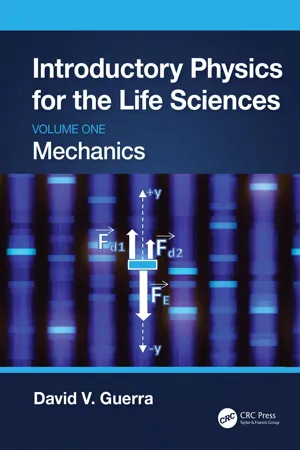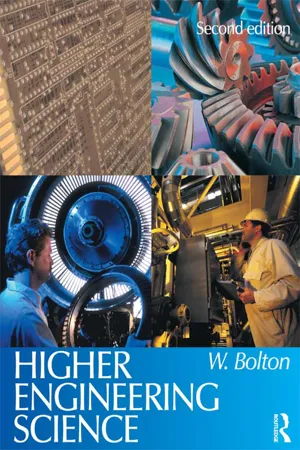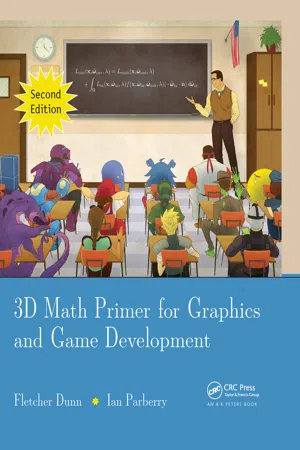Physics
Connecting Linear and Rotational Motion
Connecting linear and rotational motion involves understanding how linear motion (movement in a straight line) is related to rotational motion (movement around an axis). This connection is described by concepts such as torque, angular velocity, and moment of inertia. By understanding these relationships, physicists can analyze and predict the behavior of objects that undergo both linear and rotational motion.
Written by Perlego with AI-assistance
Related key terms
4 Key excerpts on "Connecting Linear and Rotational Motion"
- David V. Guerra(Author)
- 2023(Publication Date)
- CRC Press(Publisher)
13 Rotational Motion
DOI: 10.1201/9781003308065-1313.1 Introduction
Rotational motion is the motion of an object spinning around an axis that passes through the object itself. This is to be contrasted with translational motion, which is the motion of an object moving through space in a straight or curved path without rotation. As demonstrated in Figure 13.1 , a block sliding down an incline moves with only linear motion defined by a displacement, a velocity, and an acceleration. A disk rotating about a fixed axis moves with only rotational motion, but a ball rolling down an incline experiences both rotational and linear motion.FIGURE 13.1 Examples of different types of motion.As demonstrated in Chapter 12 , when an object is traveling in a circular path, the concepts of translation kinematics are commonly applied to the analysis, but sometimes the concepts of rotational motion, period, frequency, and angular frequency can be applied. So, circular motion provides a transition between the language of translational and rotational motion, which is formalized in this chapter. In addition, rotational dynamics will formalize the connection between the net rotational force, or net torque, on an object and the angular acceleration of the object.- Chapter question: There are bacteria that employ a rotating flagellum, tails that look a bit like a corkscrew, to propel themselves forward. In normal situations, these propulsion systems work well to move these bacteria forward through water. On the other hand, when a drop of water containing these bacteria is placed on a microscope slide, the bacteria begin to move in approximately circular paths at fairly constant speeds (Figure 13.2 ).
FIGURE 13.2
- No longer available |Learn more
- Robert A. Pelcovits, Joshua Farkas(Authors)
- 2023(Publication Date)
- Barrons Educational Services(Publisher)
6Rotation I: Kinematics, Force, Work, and Energy
Learning Objectives
In this chapter, you will learn:Definitions of angular position, velocity, and accelerationRelationships between angular and translational kinematic quantitiesRotational kinetic energy; rotational inertiaTorqueRotational analog of Newton’s second lawWork and power in rotational motionThis chapter explores the rotation of rigid bodies about fixed axes. Newton’s laws are valid for rotational motion just as they apply to linear motion. However, it will help to recast kinematics and Newton’s second law into a more useful form for dealing with rotational motion.The Motivation for Developing New Parameters
When an object is undergoing pure translational motion, every particle in the object has the same displacement, velocity, and acceleration. When a rigid body is rotating about an axis, every particle in the object moves in a circular path about the axis, but the particles can have different velocities and accelerations (e.g., particles farther away from the axis move faster), making it impossible to assign a single velocity or acceleration to the object. However, every particle rotates through the same angle in a given time interval, thus sharing a common angular displacement (Δθ), angular velocity (dθ/dt), and angular acceleration (d2 θ/dt2 ). Because these angular quantities apply to every particle in the object, they are useful in characterizing rotational motion.Angular Position, θ
1.The angle θ does not merely refer to an object’s current position relative to some reference position (i.e., it does not “reset” after every rotation). For example, if we define a wheel’s angle to be θ = 0 and then rotate the wheel three times counterclockwise, its angular position is θ = 6π, not θ - eBook - ePub
- William Bolton(Author)
- 2012(Publication Date)
- Routledge(Publisher)
4 Linear and angular motion 4.1 Introduction This chapter is concerned with the behaviour of dynamic mechanical systems when there is uniform acceleration. The terms and basic equations associated with linear motion with uniform acceleration and angular motion with uniform angular acceleration, Newton’s laws of motion, moment of inertia and the effects of friction are revised and applied to the solution of mechanical system problems. The terms scalar quantity and vector quantity are used in this chapter, so as a point of revision: Scalar quantities are those that only need to have their size to be given in order for their effects to be determined, e.g. mass. Vector quantities are those that need to have both their size and direction to be given in order for their effects to be determined, e.g. force where we need to know the direction as well as the size to determine its effect. 4.2 Linear motion The following are basic terms used in the description of linear motion, i.e. motion that occurs in a straight line path rather than rotation which we will consider later in this chapter: 1 Distance and displacement The term distance tends to be used for distances measured along the path of an object, whatever form the path takes; the term displacement, however, tends to be used for the distance travelled in a particular straight line direction (Figure 4.1). For example, if an object moves in a circular path the distance travelled is the circumference of the path whereas the displacement might be zero if it ends up at the same point it started from - eBook - ePub
- Fletcher Dunn, Ian Parberry(Authors)
- 2011(Publication Date)
- A K Peters/CRC Press(Publisher)
In the absence of external torque, angular momentum is conserved.12.5.3 3D Rotational Dynamics
Now let’s extend the basic principles developed in Section 12.5.2 into three dimensions. First, let’s review the 3D rotational kinematics quantities. The single angle θ is replaced by a rotation tensor of some kind, with a rotation matrix R or a quaternion q being the most common methods of describing orientation in general rigid body simulations. The angular velocity ω and acceleration α become vector quantities and get bolded as ω and α , respectively.To extend the dynamics principles into three dimensions, we start with torque. Not surprisingly, torque becomes a vector quantity denoted τ , and the direction of this vector indicates the axis about which the torque is tending to induce rotation. (Later we consider what happens if the object is already rotating about a different axis.) The formula for computing the torque for an applied force f and lever arm I is actually simpler in 3D than the corresponding 2D formula!Torque in Three Dimensionsτ = 1 × f .(12.29)Compare Equation (12.29) to τ = Fl sin ϕ (Equation (12.24)), and notice that the cross product has the magnitude and sin ϕ terms built in.Angular momentum likewise becomes a vector L , with a similar formula for its relation to the linear quantity:L = r × P .Orbital angular momentum of a particle in three dimensions with radial vector rCompare this to Equation (12.28).A reader who is paying attention might note that Equation (12.28) is only one of two equations we gave for angular momentum in the plane—the one we deemed to be more appropriate for orbital angular velocity of a particle—and wonder about the other formula, Equation (12.27), which was more appropriate for spin angular velocity. That formula was L = Jω , and to get its three-dimensional equivalent, we must understand how to extend J , the moment of inertia, into three dimensions. Luckily, the link between the two momentum equations is an excellent way to get this understanding. Let’s start by expanding L = r × P , with the goal of ending up with something that looks like L = Jω
Index pages curate the most relevant extracts from our library of academic textbooks. They’ve been created using an in-house natural language model (NLM), each adding context and meaning to key research topics.



